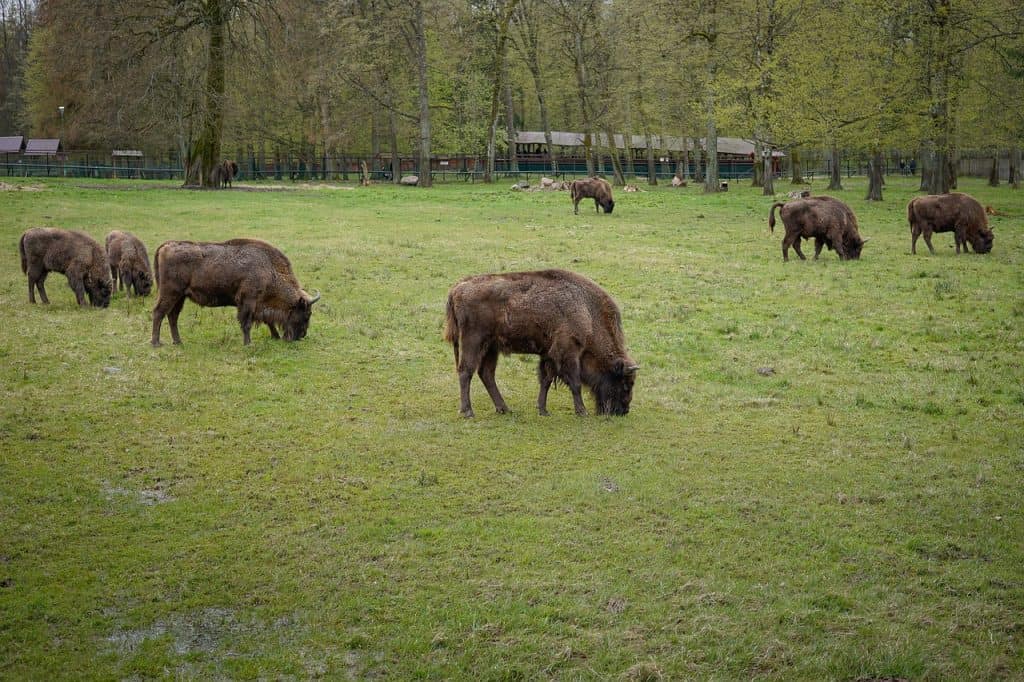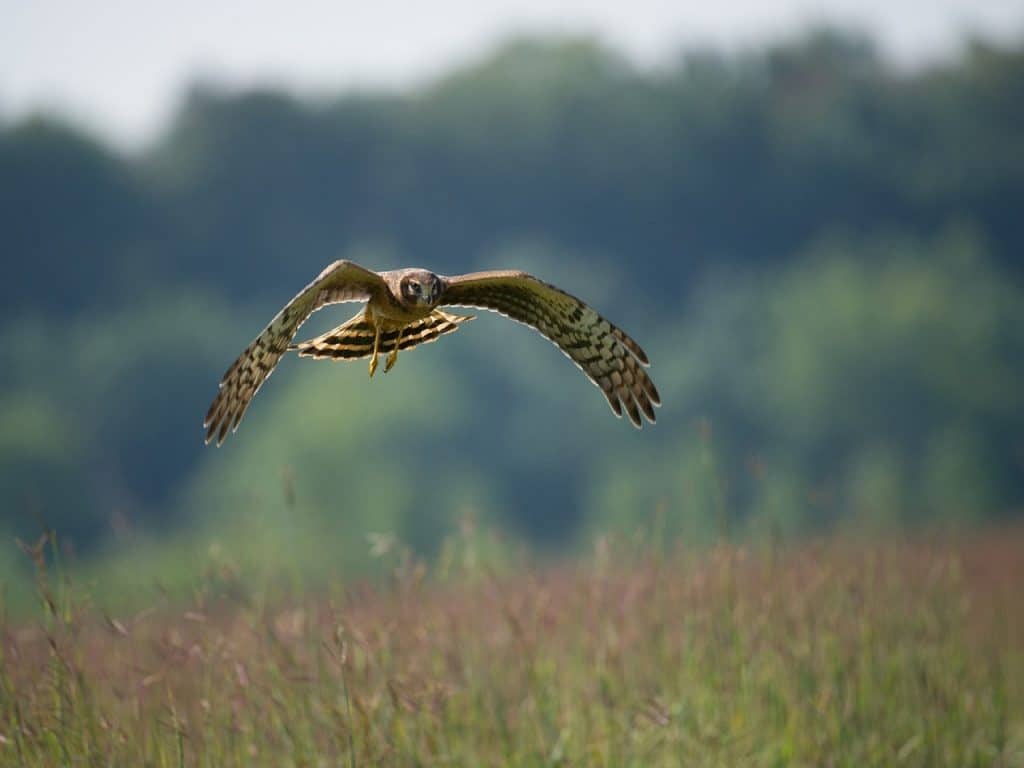Krasnobrodzki Landscape Park covers a part of the highest elevations of Roztocze Środkowy, exceeding 350 m above sea level. and a fragment of the upper Wieprz valley. In the north-west, the Park borders the Roztoczański National Park buffer zone, and in the south, the Park buffer zone meets the Solska Primeval Forest Landscape Park.
The largest river of the Park, quite poor in water, is Wieprz. The river is accompanied by beautiful sub-slope springs. The most picturesque and most efficient springs – in Hutki, Husiny and at the “Na Wodzie” Chapel – are protected as natural monuments. In the waters of Wieprz, apart from numerous fish species, you can also meet crayfish.
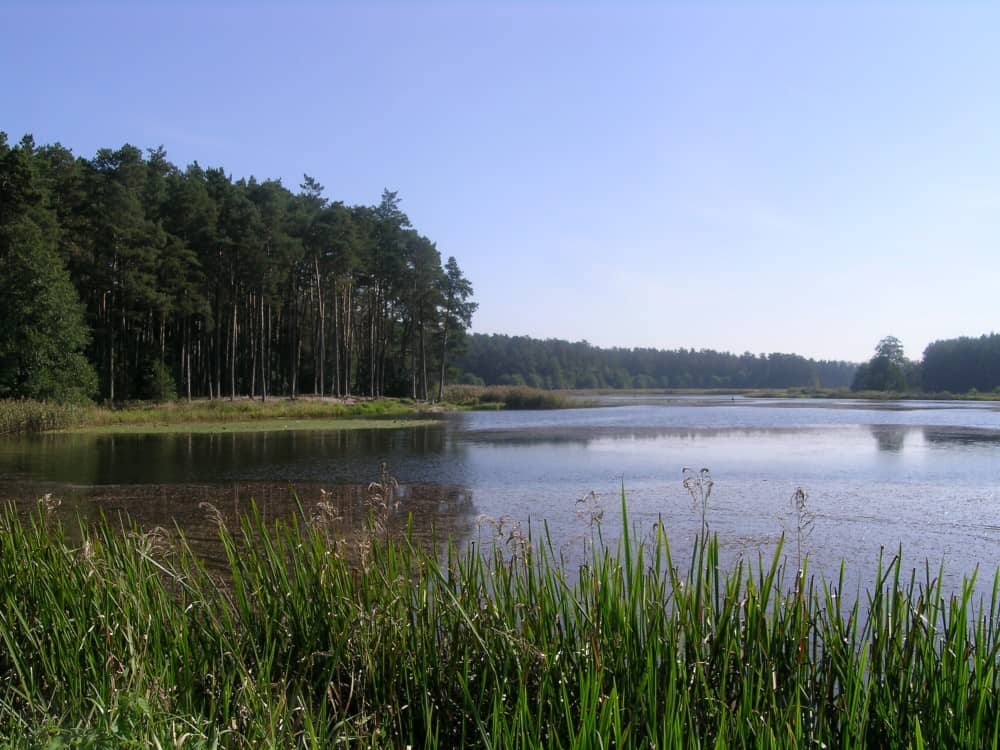
The exceptionally picturesque and varied landscape proves the former geological activity in the Krasnobrodzki Landscape Park. Rock outcrops in the form of outliers on the peaks of Roztocze hills are characteristic. The largest clusters of rocks are located on the Wapielnia hill (387 m above sea level) – the highest hill in the Central Roztocze region – and on the Kamień hill (348 m above sea level).
In the Wieprz River valley, we can meet parabolic sand dunes, up to 20 m high and 1.5 km long. Another interesting form of the Park’s relief are dry valleys forming two systems: one of them occurs in the vicinity of Krasnobród and is associated with the Wieprz valley, while the other occurs in the south-western part of the Park and is associated with the valley of upper Sopot. On the other hand, deep ravines formed in the areas covered by loess patches. They are located near the Zielone village.
Flora
Krasnobrodzki Landscape Park is occupied by forests in over 60% of its area. Despite the centuries of forest management, in many places they have retained the character of the primary forest. The dominant group is the fresh coniferous forest, where pine is the main forest species. The plant cover characteristic of this group includes rare mountain plants such as: the club moss, the broadleaf cashew, the small devil, the rib cage, the old man Fuchs, and the purple hymen. Deciduous forests are represented in the Park by small patches of Carpathian beech (Jacnia, Szur). The most interesting species of the undergrowth of this community are: glandular livestock, almond-leaved spurge, tuberous comfrey, sticky sage. Alders have developed in the Wieprz River valley. In the vicinity of Hutki and Podklasztor, there are valuable peat bog communities with specific plant species. These are: peat moss, round-leaved sundew, common pennywort, white pollock, string sedge. On the right bank of the Wieprz River valley in Krasnobród and on the edge of the forest to the south-east of Jacnia, you can find small communities of xerothermic vegetation, which include, among others: oman noble, pygmy purgatory, and common man. Among the remaining, rarer species, it is worth mentioning the twinflower, snowdrop snowdrop, and several species of orchids.
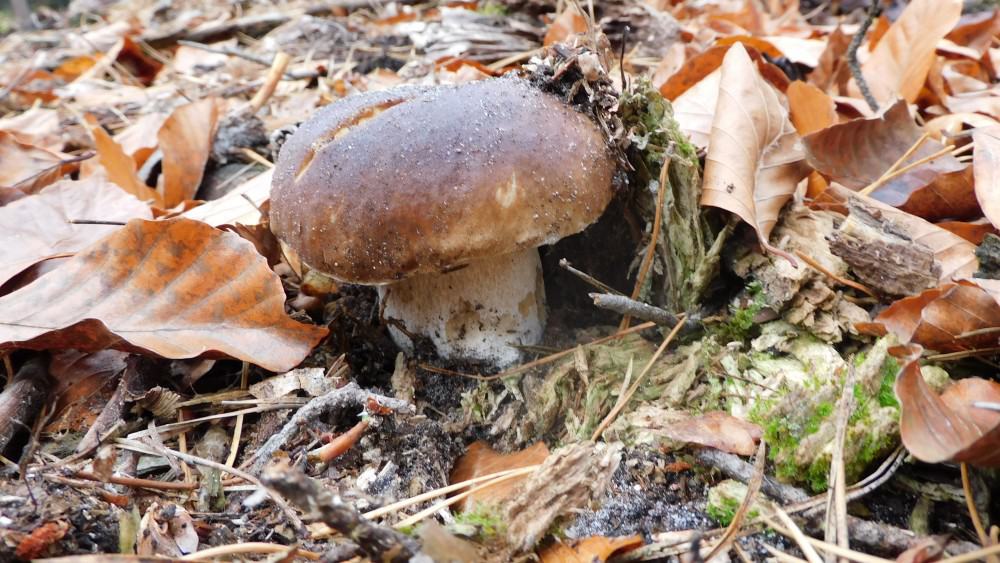
Fauna
Wieprz’s waters are full of life. The upper part of the Wieprz River in Roztocze is the land of trout and grayling, which here reach impressive sizes. We also find crayfish here. Rivers and ponds are the mainstay of water birds such as: mute swan, merganser, bittern. In the area of the Park, rare bird species such as lesser spotted eagle, black stork and wagtail nest have been found.
Among forest ungulates there are: red deer, roe deer and wild boar. Predatory mammals are represented, among others, by: badger, ermine, raccoon dog, pine marten, beech marten, weasel and ferret. The presence of several species of bats was confirmed, including borowiaczka, big-eared bat, late scotoma and mopus.
Tourism
Tourist traffic in the Park is concentrated mainly in Krasnobród – a health resort and one of the most popular holiday resorts in Roztocze. There are: a sanatorium, well-equipped recreation centers, guest houses and private accommodation, camps, youth hostels, a horse-riding center, as well as a swimming pool with a sandy beach. A swimming pool complex and a rope park were built next to the bathing beach. It is also possible to rent water and recreational equipment.
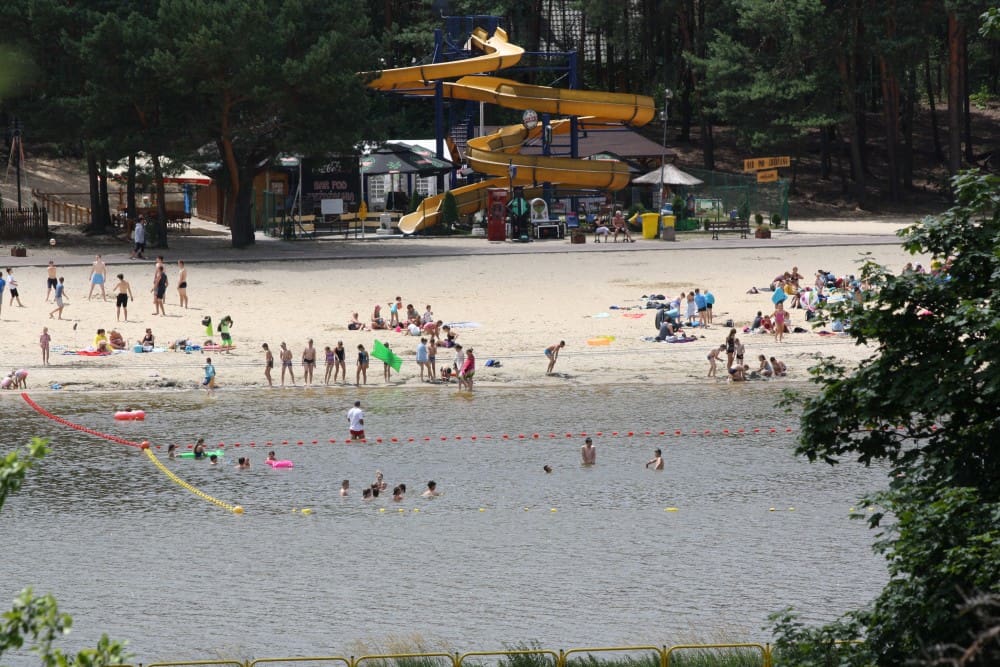
Four marked tourist routes run through the Park: blue – “Centralny” (the longest Roztocze route, 195 km from Szastarka to Bełżec), green – “Władysława Podobińska” (56 km from Zamość to Susiec), red – “Partyzancki” (length 53 km from Krynice to Szperówka), black – “Łącznikowy” (length 16 km from Krasnobród to Husin).
For tourists who spend their time actively, there are Nordic walking routes: 3 km around the crown of the lagoon, over 6 km through the St. Roch and the longest 13 km to Szuru. The existing walking paths lead through the St. Roch, to Szur, through the picturesque Krasnobrodzkie Gorges, To Belfont, Around Krasnobród and along the Ułański Trail. The last path is dedicated to the 25th Regiment of Greater Poland Lancers, who fought the victorious battle for Krasnobród in September 1939. Two wheels fans have not been forgotten. You can choose one of three bicycle paths: the Jakubowicka Loop, the To Figarnia trail or the Hołda hill. Another type of tourism is kayaking. The natural character of the Wieprz River is an opportunity to get to know the rich nature of the Park. In autumn, the Park’s forests belong to mushroom pickers. The variety of forest habitats means that we can find here almost every species of mushroom from which you can prepare delicious dishes. The winter attraction of Krasnobród are sleigh rides with torches leading through forest paths and picturesque gorges. There is a ski lift in Jacnia.
The article was based on materials from the official website of Krasnobród Landscape Park.
